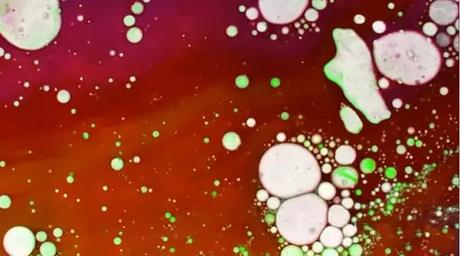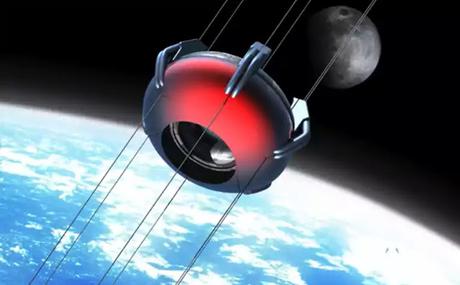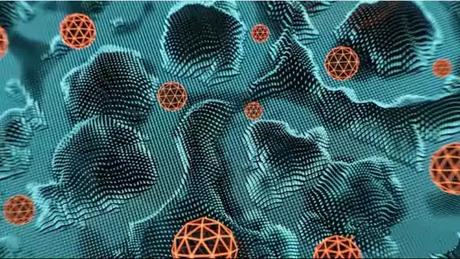What does the future of humankind have instore for us? How will society evolve and how will human beings change? There are a number of proposed models we might follow… and most involve us getting bigger, more powerful, and spreading further and further out. But it doesn’t have to be that way. This is Unveiled, and today we’re answering the extraordinary question; what if humanity was a Type Four-minus civilization?
Also Read: What If Humans Built a Living Spaceship?Kardashev Scale

The Kardashev scale has long been a popular way to examine potential, alien societies – and speculate on the future of humankind. It focuses on any given civilization's ability to harness the energy, and in its most basic form has three stages.
Type One is mastering the total energy output of your home planet. Type Two is mastering the energy output of your home star. And for Type Three it’s the output of the entire galaxy you live in. For humans, this is the Milky Way, which contains between 100 billion and 400 billion stars. So that’s a lot of power!
Nevertheless, though the Kardashev Scale is probably the most famous measure of potential civilizations out there, it’s not without its critics. Many see it as being blindly expansionist, unnecessarily risky, or just blatantly impossible. So, there are other ways of looking at the world and contemplating the future of our species.
Microdimensional Mastery

The late cosmologist, John D. Barrow, came up with his own alternative system; the scale of micro-dimensional mastery, or the micro-scale. Barrow’s inversion of the Kardashev Scaleproposes that it’s how well a civilization can control small things, like atoms and quarks, that really counts. Rather than how well it controls large things like stars and galaxies.
For Barrow, the more you can master the minuscule, the more advanced you can become. Barrow’s scale features a Kardashev-like ranking system, only it moves the other way, getting smaller and smaller as the levels increase. And humans are already a reasonable distance along with it.
A Type One-minus is any civilization with the ability to use observable, raw materials in construction, which covers a range of things that humans can already do - from building a house to baking a cake.
A Type Two-minus is capable of manipulating the cells and organs of the body, as well as genes - which humans can also already do through gene-editing technology like CRISPR. So far, so good.
Type Three-minus is where we begin to reach our current limit, though, because humans lie somewhere between here and Type Four-minus, without quite fitting into either category.
Type Three-minus manipulates molecules to create new ones, which we can already do to a certain extent through chemical engineering- including the creation of plastics and synthetic polymers. But we haven’t yet mastered this as thoroughly as we have the previous levels, and our synthesized materials still leave a lot to be desired.
Type IV-minus Civilization

Meanwhile, the hallmark of a Type Four-minus is the full mastery of atoms and nanotechnology. Again, we have made some progress here, for better or worse. And take just a cursory glance at any twenty-first-century tech news outlet, and you’ll see that nanotech is widely pitched as the next big thing for humankind. But we’ve still a long way to go until we totally understand it.
Barrow’s scale then extends to Types Five and Six-minus… before reaching its micro-pinnacle with Type Omega-minus, which is the ability to manipulate spacetime itself. An Omega civilization would have the very fabric of reality under its spell. But suffice to say, humanity is nowhere near this just yet.
For now, we’re all too busy getting to grips with types Three and Four; with the mastery of molecules and atoms. And while with the traditional Kardashev Scaleit’s all eyes on the sky as we look to expand, with Barrow’s micro-scale it all unfolds under the microscope.
As mentioned, nanotechnology is the primary goal if humanity ever wants to call itself Type Four-minus. For something to be classed as nano, it has to be between one and one hundred nanometres. This is far smaller than the human eye can see and unless we one day develop enhanced cybernetic eyes, we’ll never be able to walk through life immediately aware of the nano-world all around us. Still, it’s an incredibly diverse area of science and one that’s been widening for decades.
There are now thousands of nanotech products available - including nanoparticles designed to improve cosmetics, antibacterial cleaners, clothing, fuel and to provide an edge with sports equipment. But this is the first-generation nanotechnology, and we expect far greater things in the future. And to wield far greater control.
Also Read: Could Dark Matter Stars Exist?
Molecular Assembler

If humanity was Type Four-minus, then it would probably have at its disposal a machine called a molecular assembler. This is a theoretical device, most championed by the US engineer K. Eric Drexler, which would allow its user to specifically move and place individual atoms - to precisely form brand new molecules and kick start controlled chemical reactions.
With a molecular assembler, life would be like a jigsaw puzzle made up of infinite pieces and guided by our hands. Strength reinforcement would be top of the list of things we’d hope to achieve with it.
The idea is that we could make all existing products stronger, faster, better, and less likely to go wrong or depreciate. As an example, imagine reorganizing the atoms in graphite to engineer diamond. The value of diamond would probably go down, but only because so many more things would be made of this famously robust ingredient.
Carbon nanotubes are a similarly strong prospect, but more widely tipped than diamond to be the building product of the future. These are tiny tubes made up of carbon atoms bound together, and when you get enough of them in one place you get a material that's four hundred times stronger than steel.
It’s not a hypothetical material, either, because we already have examples of it - notably found in Damascus steel, which dates back thousands of years. But, while we do have methods to create carbon nanotubes, they’re so far very expensive.
Develop something like a molecular assembler, though, and it becomes far easier, nano-inventions of all types become much more possible…and type Four-minus becomes a lot more feasible.
Space Elevator

One of the more exciting applications of carbon nanotubes and nanotech actually involves us getting to build something massive; a space elevator. It may feel like it’s something more at home on the regular Kardashev Scale but, really, micro-dimensional mastery is the crucial first step toward this particular cosmic megastructure.
A space elevator would need to withstand the speed and force of the Earth’s rotation and movement through space… so everyday steel just isn’t strong enough, but carbon nanotubes might be. We can see here, then, a specific example of how mastering the very small can lead to much bigger things… because, while a TypeFour-minus is predominantly interested in atoms, it’s also much closer than we are to making space travel easier, cheaper, and more widespread than ever before.
Back on the ground, and nanotechnology could give us greater control over our own bodies, too. The prospect of medicinal nanobots has made the headlines time and again in recent years. The theory is that these invisible machines will be able to enter into a person’s body for precise medical treatment.
They could target cancerous cells and destroy them without the need for chemotherapy or invasive surgery. They could be used to improve the strength and function of our bones and muscles. Or, if modeled after red blood cells, could be used to deliver oxygen all around the body.
For a Type Four-minus being, nanomedicines are designed to increase longevity and quality of life. So, is there a downside to all of this technological improvement? Well, some worry that for all the problems it solves, nanotech could create new ones, as well.
The Downside of Nanotechnology

Unfortunately, lots of nanoparticles - including those found in cosmetics - double up as pollutants. They may be unseen, but they can clog up our world… which is why environmental agencies want more research done into them, and greater regulation.
Were a Type Four-minus society to take off in a big way, then it would need to first know that the tech driving its progress wasn’t going to have long-lasting negative effects - or else it could wind up destroying itself. And, according to one particular theory, that no over-exaggeration. The gray goo catastrophe is a doomsday scenario like no other.
First proposed, again, by K. Eric Drexler, it’s a potential apocalypse where humans lose control of nanotechnology, particularly if it becomes self-replicating, leaving the tiny machines to ruthlessly devour everything in their path. Eventually, Earth - and potentially the entire universe - is transformed into a homogeneous mass. The gray goo.
The good news is that most scientists who work with nanobots insist that this isn’t what’s going to happen. And, in fairness, Drexler has gone on record more recently to say he regrets bringing the gray goo idea to the general public.
Conclusions
So, perhaps, to some degree, it’s something that a Type Four-minus civilization would have to manage… but it shouldn’t stand in the way of micro-dimensional mastery. The ultimate endgame for John D. Barrow’salternate Kardashev Scale.
Clearly, at our current level, we still have a lot to learn. But there’s also an all-new world on the horizon. And that’s what would happen if humanity was a Type Four-minus civilization. What do you think? Is there anything we missed? Let us know in the comments.
Source Credit: Unveiled
